Expanding Horizons:
From China to America
Mary Hsiu-Chen Liang
Life and Family
Mary Hsiu Chen Liang was born to Dr. Imin Hsu and Frances Yamsan Hsu in Shanghai, China on July 15th of 1923. She was the eldest of five children. Her father was a urologist and her mother was a pianist. In a profile made by the Shanghai Rotary Club which he belonged to, Imin moved to America for post-graduate work and did graduate work at the University of Pennsylvania. He and his wife Frances married in Philadelphia before moving back to China.
Although Mary states in her PAFA application that she had no plans to naturalize once in America as a student, many documents thereafter are regarding her application for American citizenship. She and her husband Daniel Shao-Fu Liang were officially granted citizenship under a concurrent resolution to the Refugee Relief Act of 1953 in 1955. Mary’s love for her homeland remained, as she expressed her and her husband’s “hope of returning to China in the distant future”.
There are many factors which could have affected her decision to stay, including her enjoyment of America, marriage to Daniel, and growing family. However, a main reason may also have been the civil war on the Chinese mainland. Mary describes China to be in a “sorrowful state”, claiming “who is to ‘vanish’ next [...] depends on the whim of those commies” in a September 24th letter from 1952. She mentioned her father was able to get to Hong Kong, but worried for her mother and sister who remained in Shanghai.
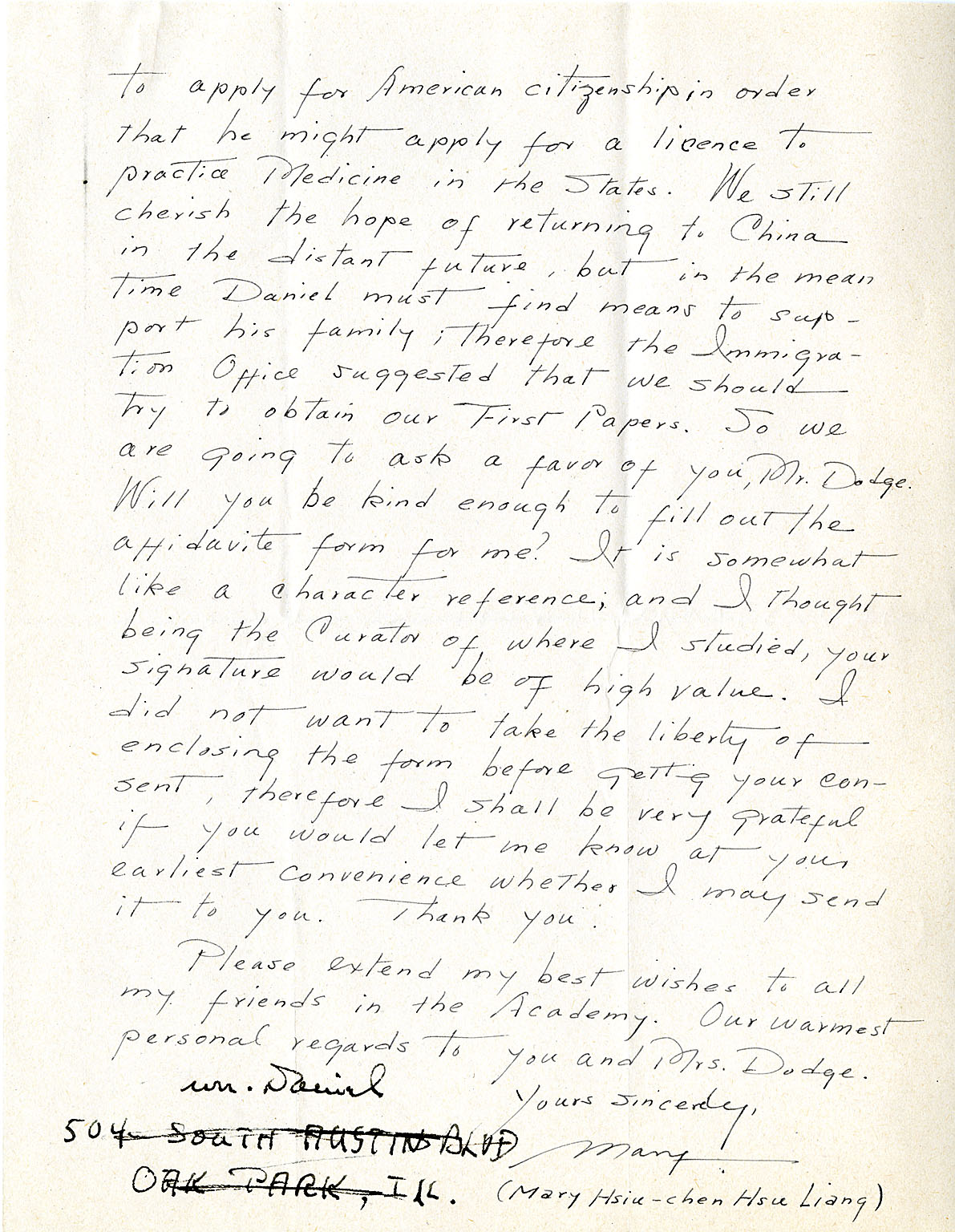
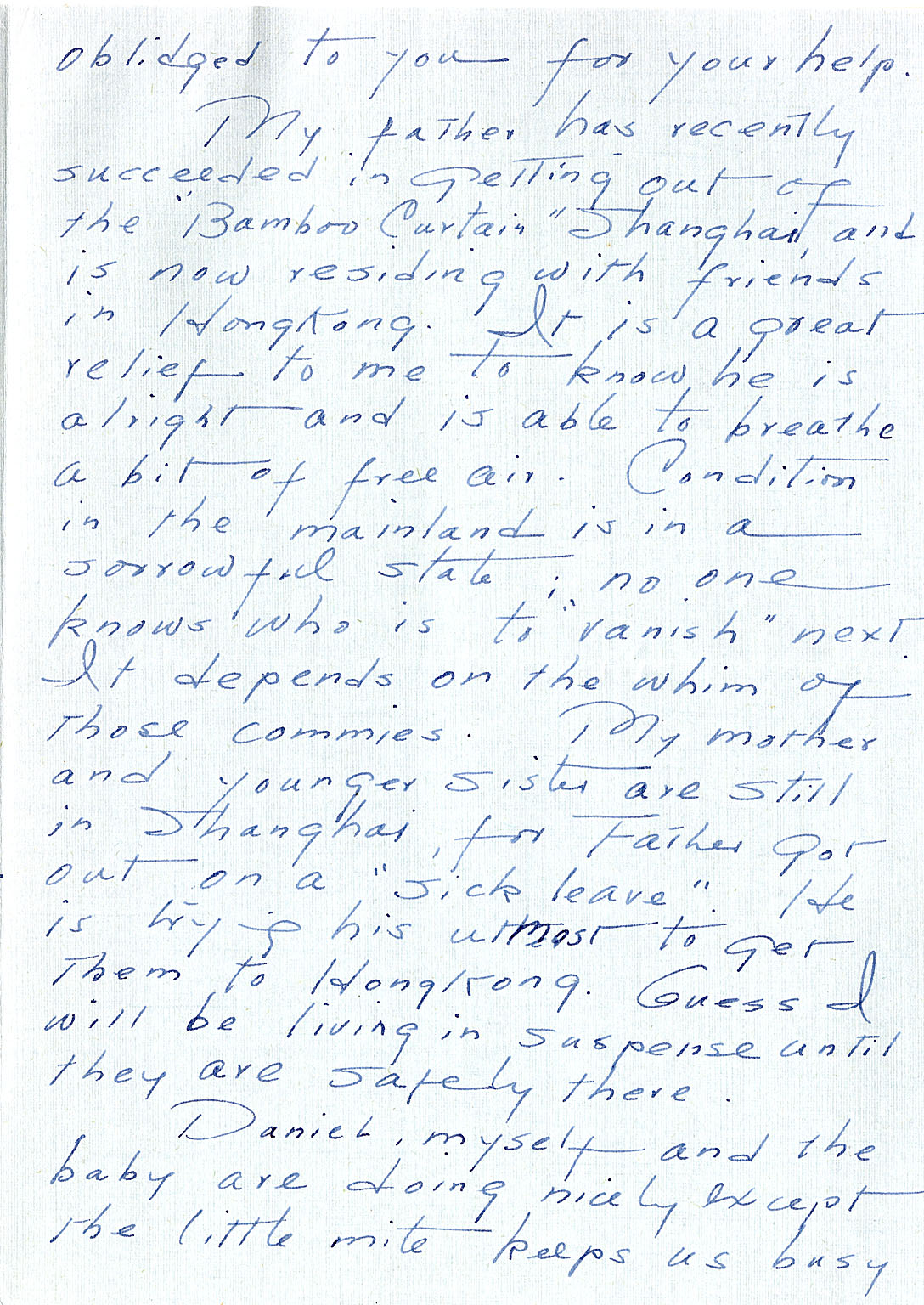
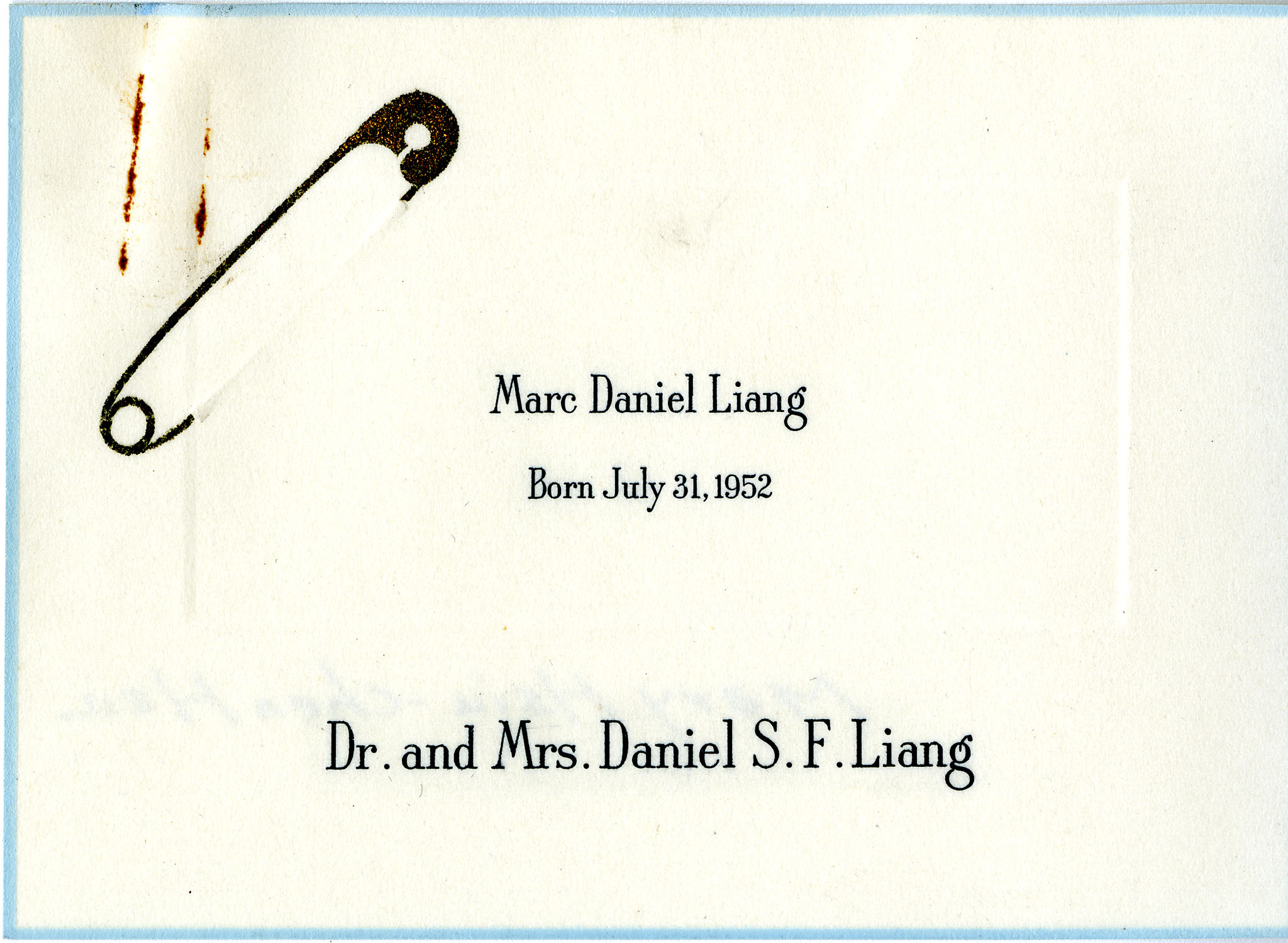
Much about Mary’s later life is unknown. She is survived by her eldest son.
Early Education
Mary’s formal education started first at the McTyeire School, an all girls private school in Shanghai, where she stayed for six years. She then spent another six years at St. Mary’s for high school and three and a half years at St. John’s University, earning her Bachelor's in Political Science. It would seem from her education that Mary’s family was affluent, with the McTyeire School providing schooling exclusively to those of wealthy, elite status. She and her family may also have been Christian, given that all the aforementioned institutions were Christian. Prior to attending PAFA, Mary was also able to afford four years of private instruction in Chinese painting under distinguished Chinese painter, C. Y. Woo (1899 - 1989).
PAFA Education
In her January 10th, 1948 PAFA application, Mary stated she felt her “nature [was] artistically inclined”. She was also eager to expand her artistic horizons, wishing to “compare Chinese paintings with those of other countries,” and build upon her preexisting training. Despite being notified of her acceptance on April 2nd of 1948, Mary had to wait until the following year to attend. In a letter to the Curator of Schools R. A. Ballinger, she explains how passport permissions and student visas took six months to be approved and that she could not procure one in time. A December 7th letter from 1948 also to Ballinger is her first word of civil unrest in China, Mary mention the “[c]ondition in China is very critical caused by the rapid advance of Communists” and how she was “anxious to leave as soon as possible”. By May 3rd, 1949, Mary had sought advice from the American Consulate General and moved to Hong Kong, which was under British control at the time, either for safety or convenience.
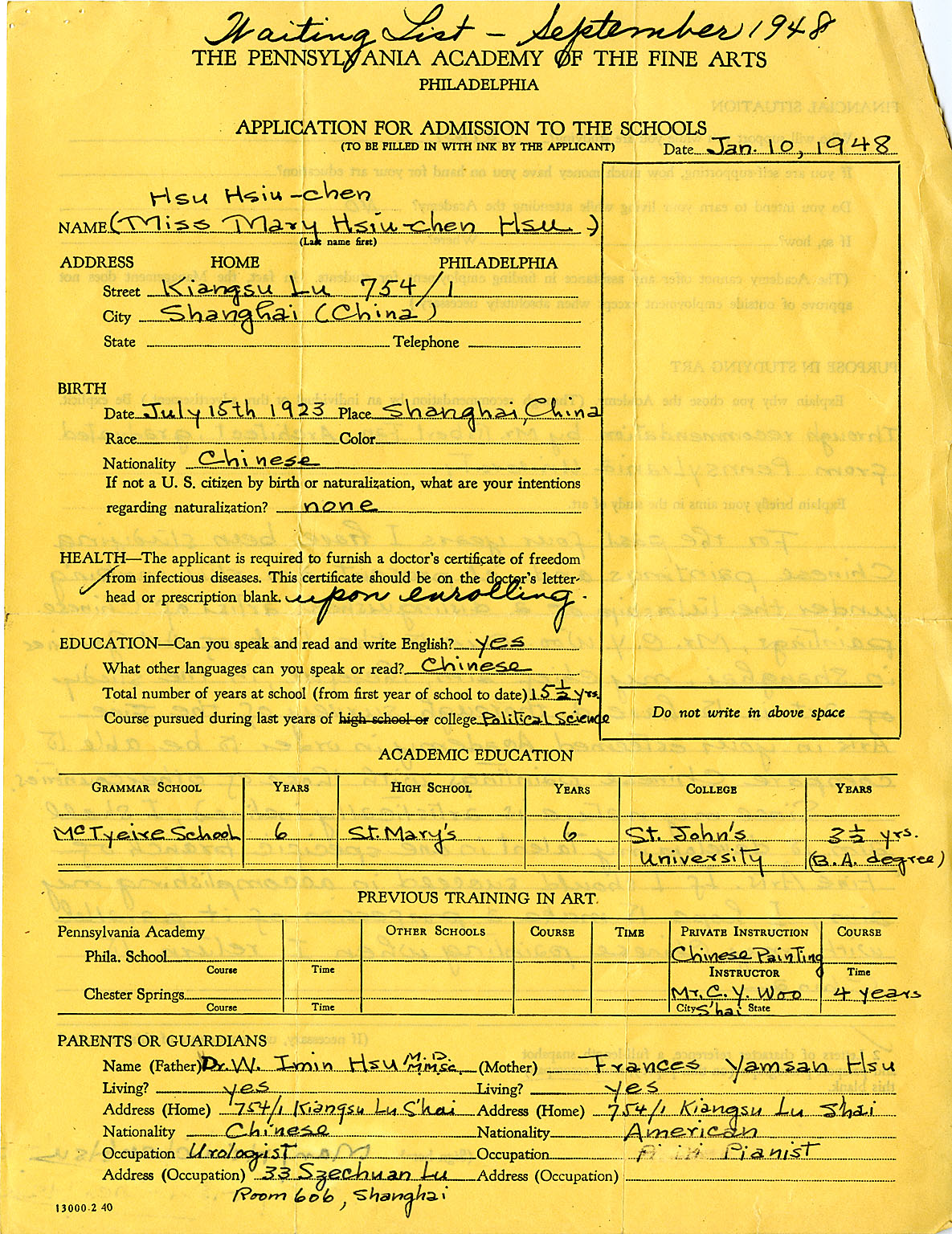

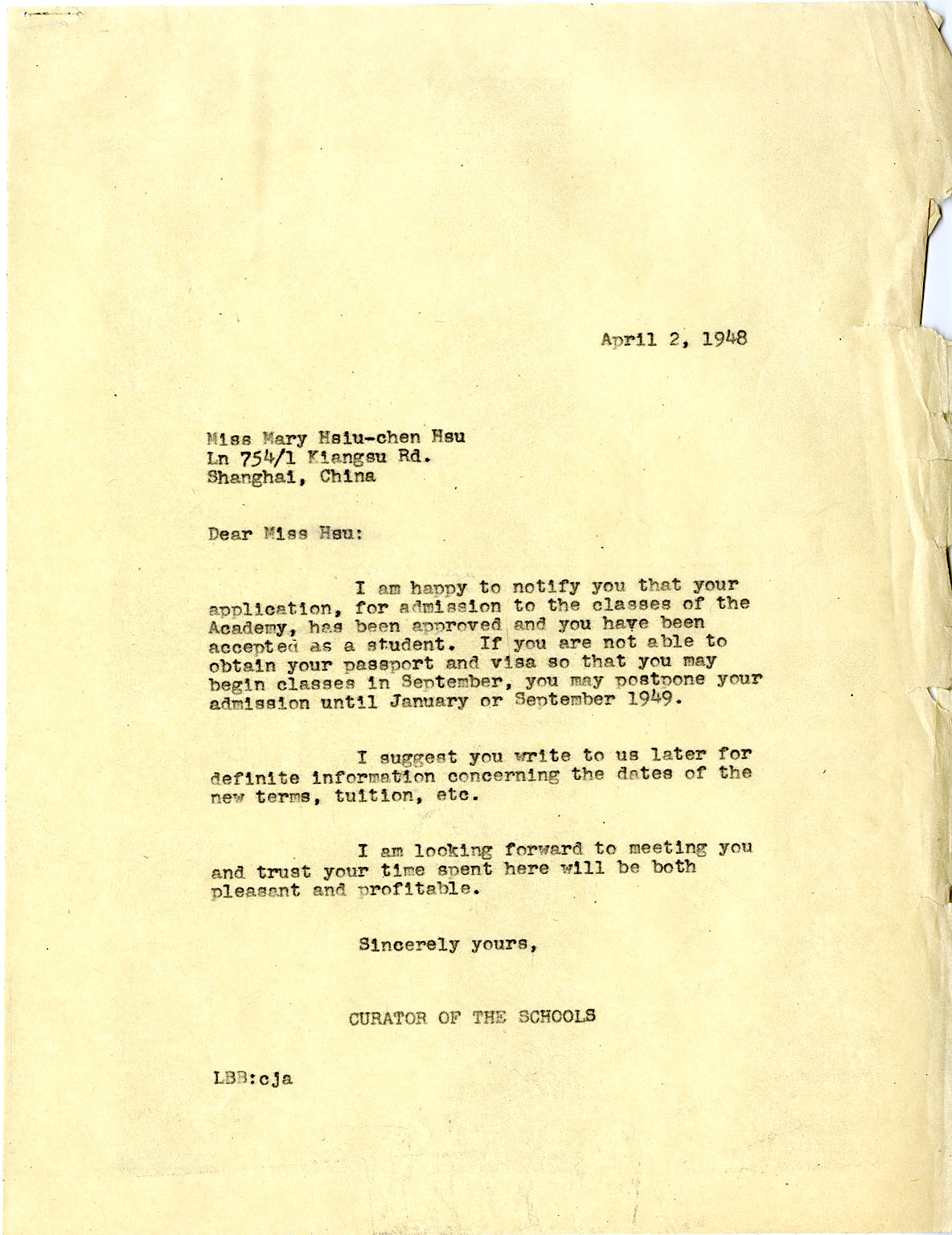
In 1950, Mary applied for a grant which would provide emergency aid to Chinese students. She may have sought financial assistance due to the Chinese Communist Revolution. Despite initially being awarded the grant, there were issues concerning her delayed enrollment, where she attended, and insufficient accreditations concerning PAFA. The result of the grant is unclear; there was one final letter between Curator of Schools Vernon M. Dodge and Thomas R. Fisher: the representative who handled her grant application, the letter reads in a positive light which suggests the issues were resolved in Mary’s favor.

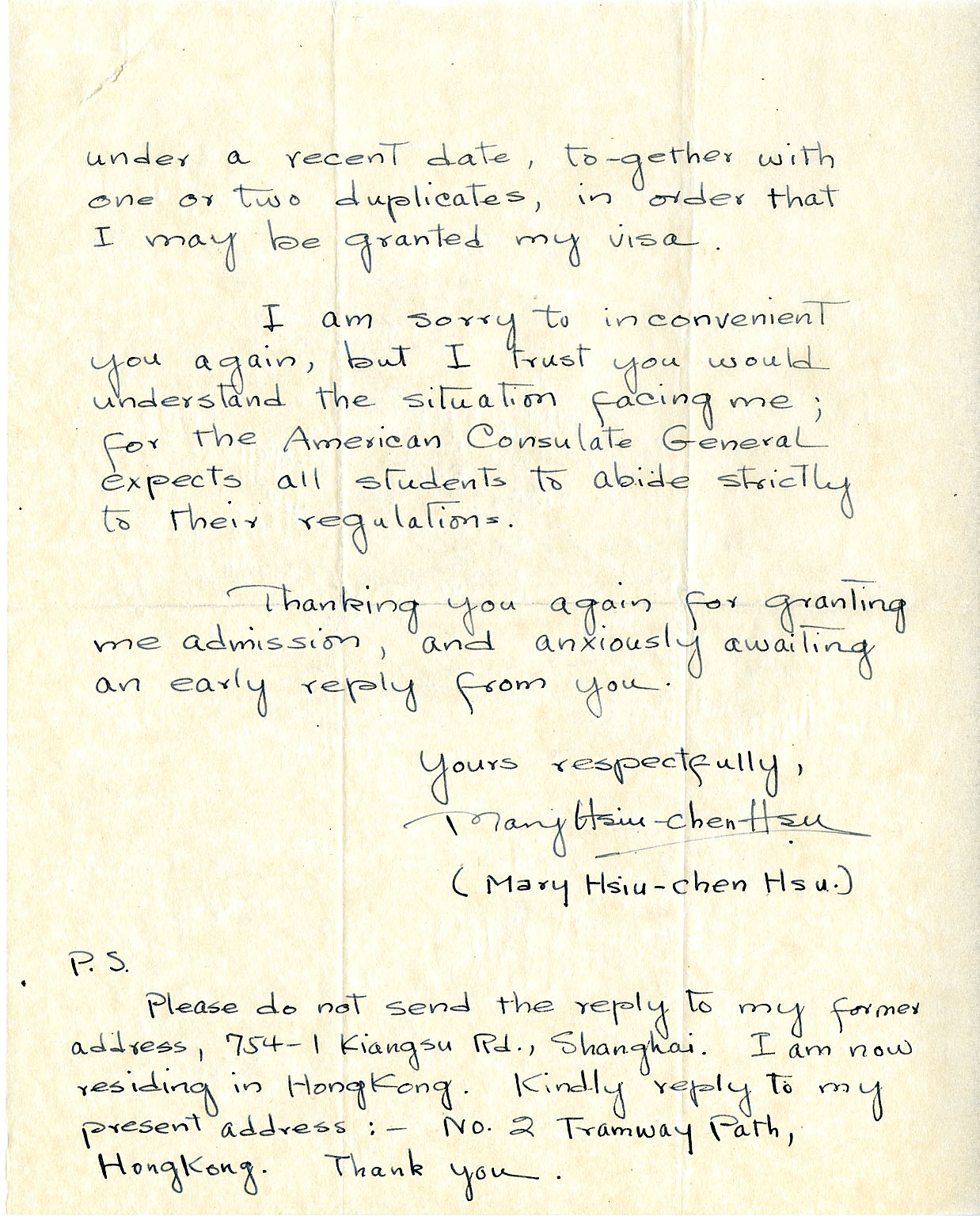
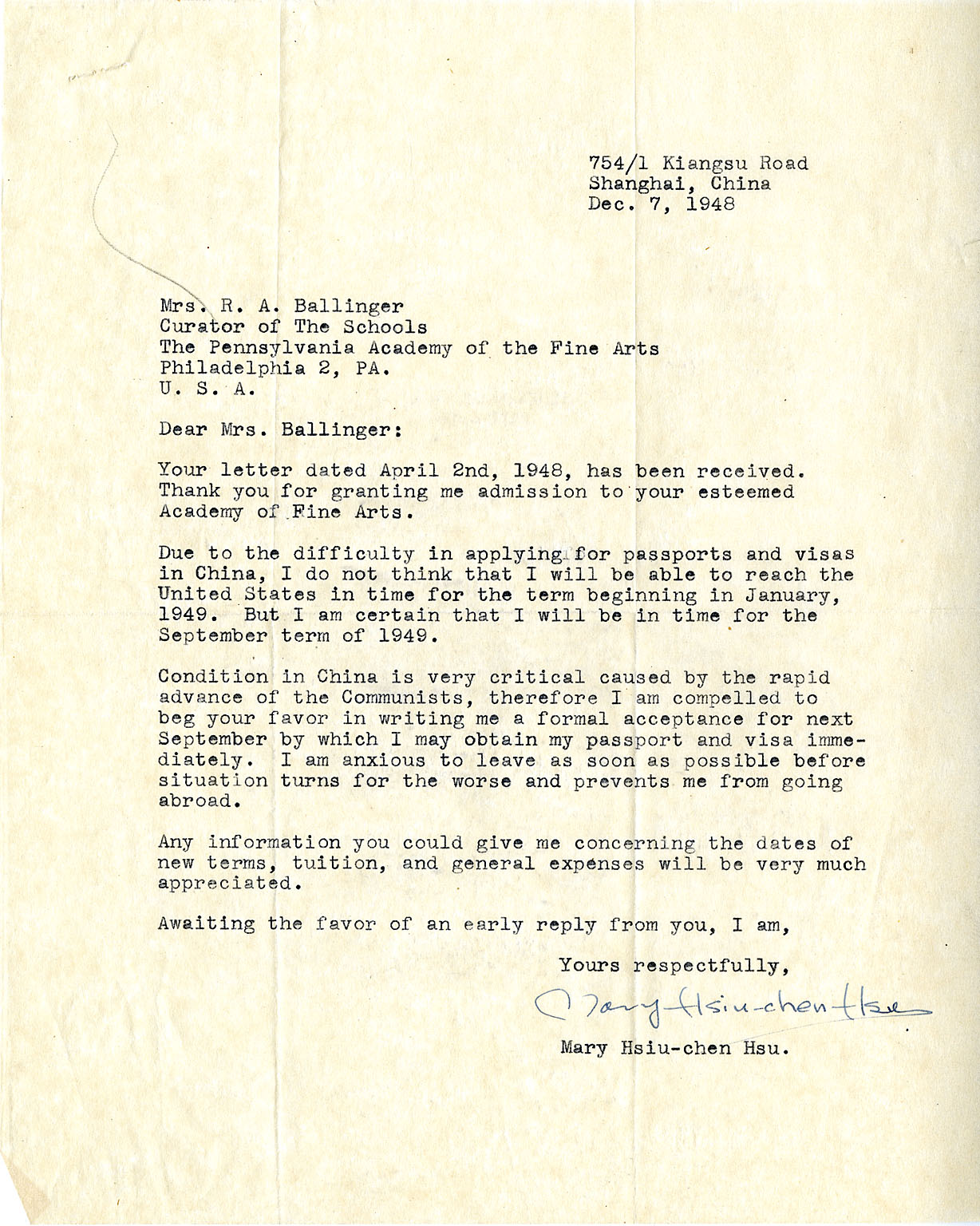
In 1950, Mary applied for a grant which would provide emergency aid to Chinese students. She may have sought financial assistance due to the Chinese Communist Revolution. Despite initially being awarded the grant, there were issues concerning her delayed enrollment, where she attended, and insufficient accreditations concerning PAFA. The result of the grant is unclear; there was one final letter between Curator of Schools Vernon M. Dodge and Thomas R. Fisher: the representative who handled her grant application, the letter reads in a positive light which suggests the issues were resolved in Mary’s favor.
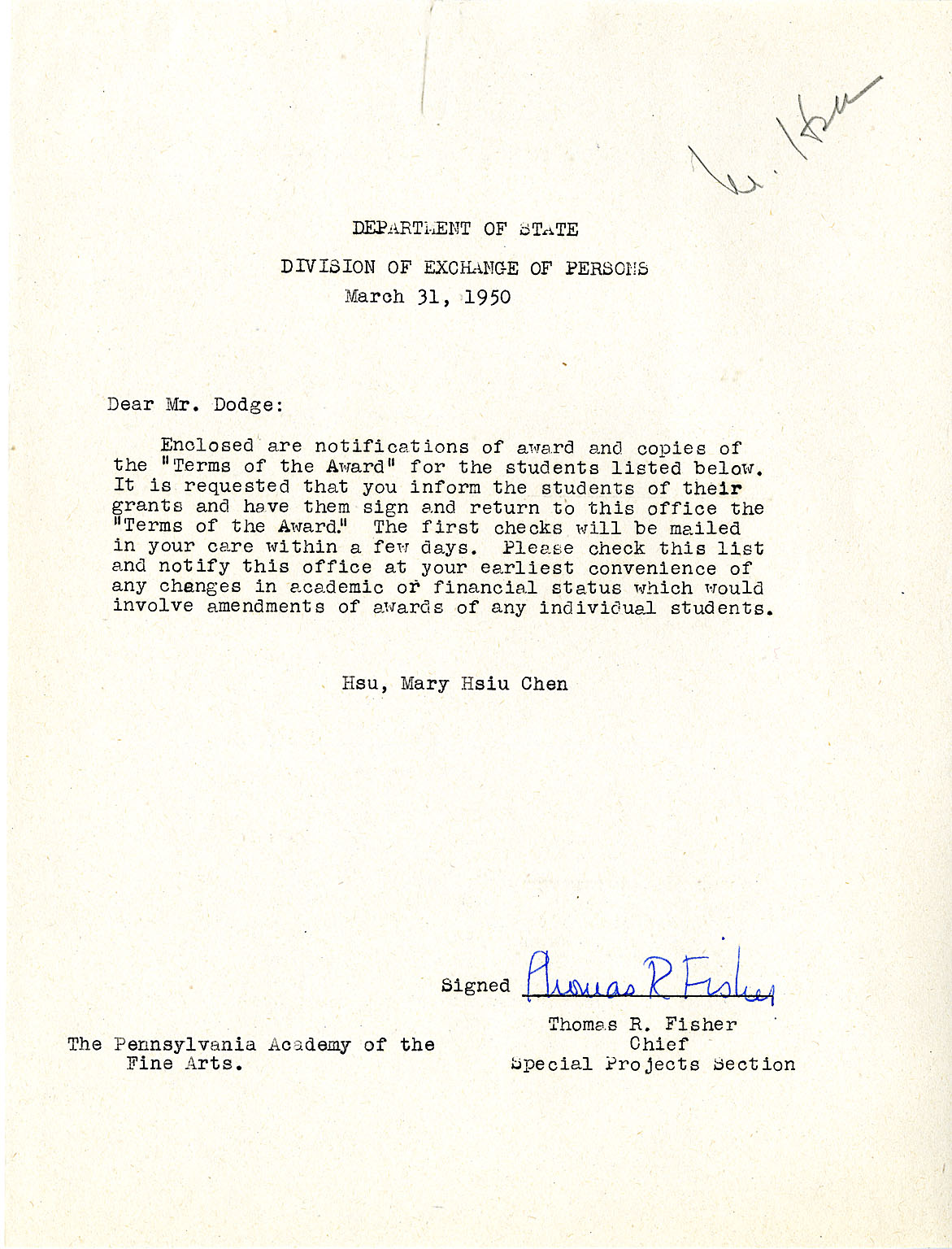

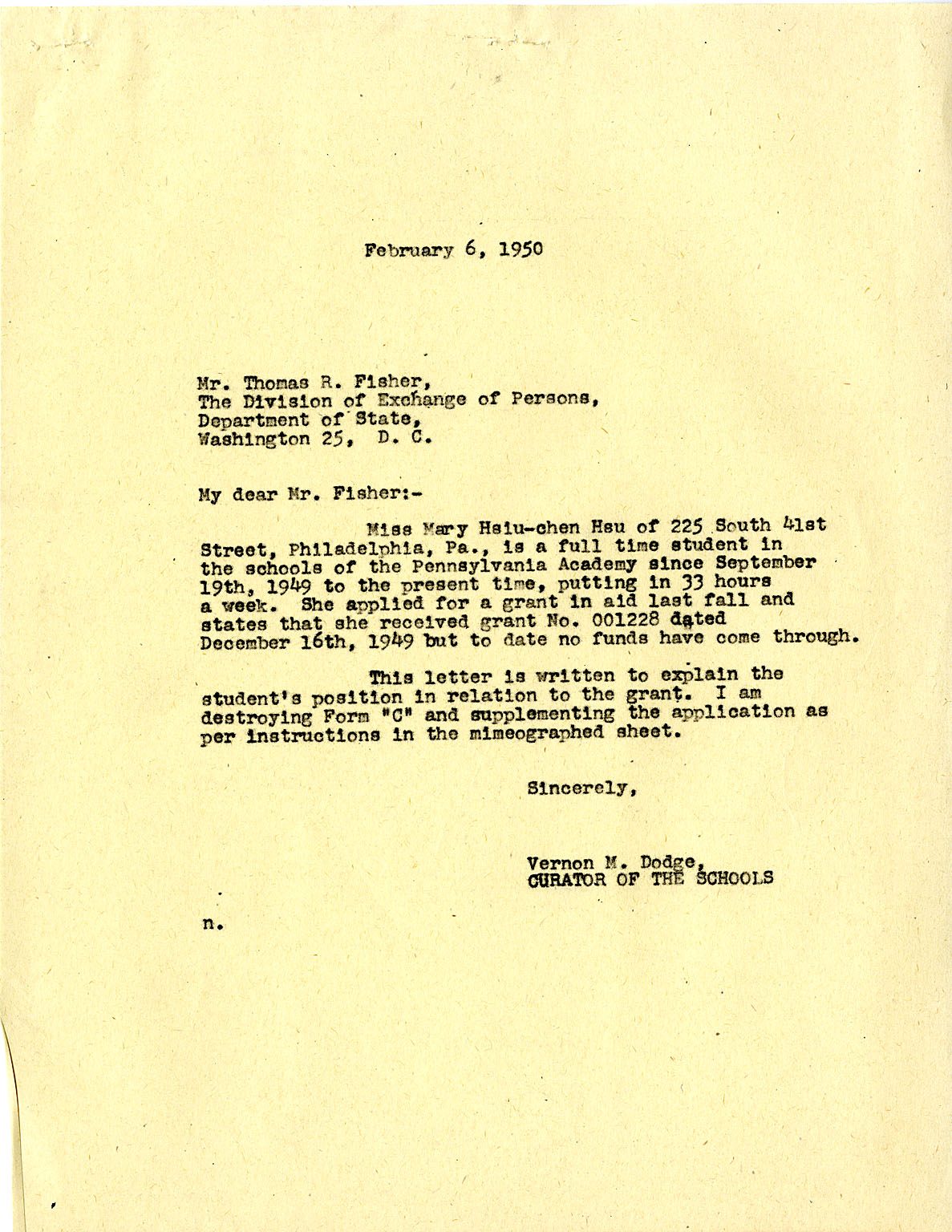
While at PAFA, Mary proved extremely proficient in her courses, by the second year of her attendance, in a letter of recommendation fromVernon, she was mentioned to have been “recently promoted to the Advanced Painting Section”. Records also show Mary had earned a B+ on her final grade, totaling 72 credits by the end of the 1950-51 semester. For unknown reasons she honorably withdrew on May 18th, 1951.
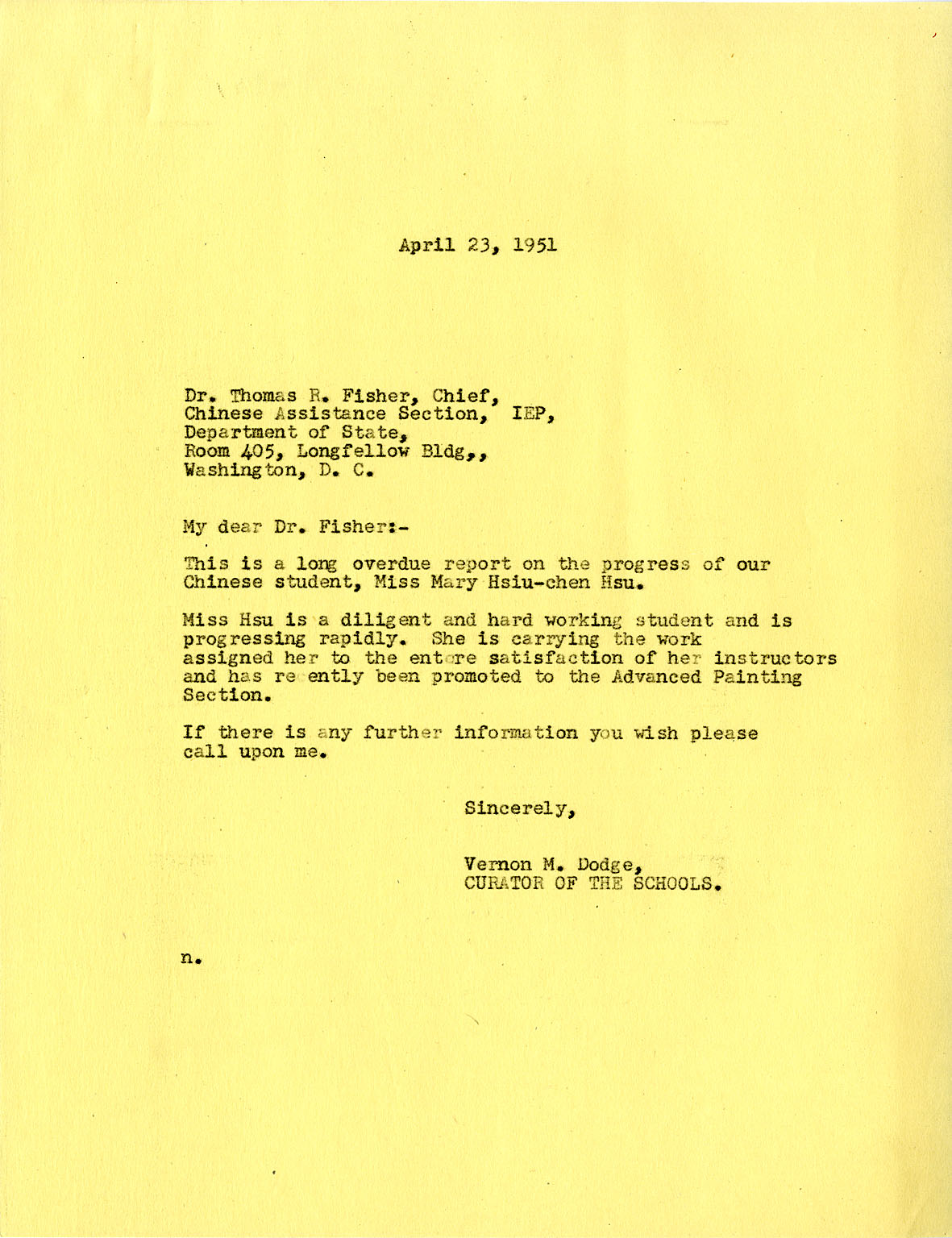
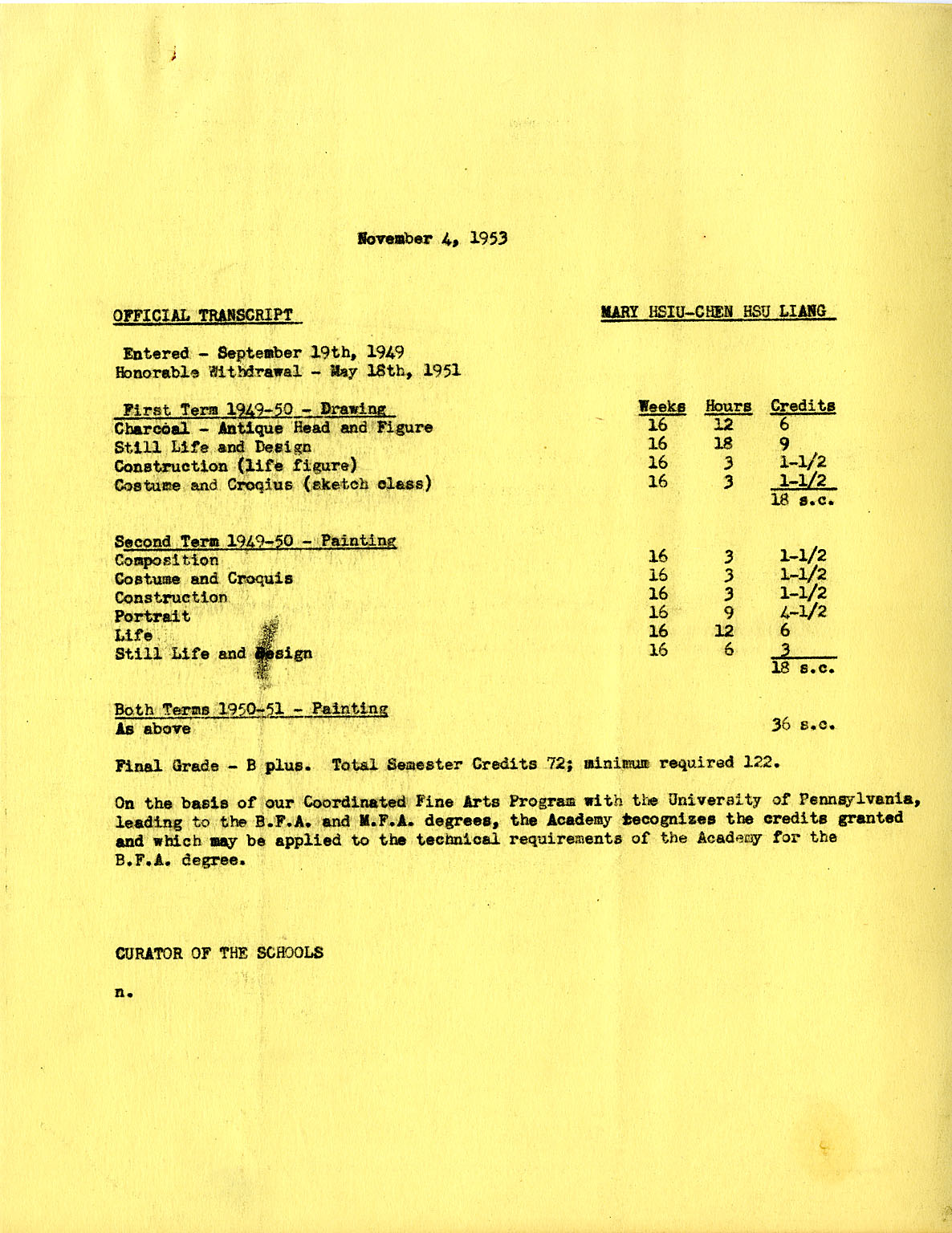
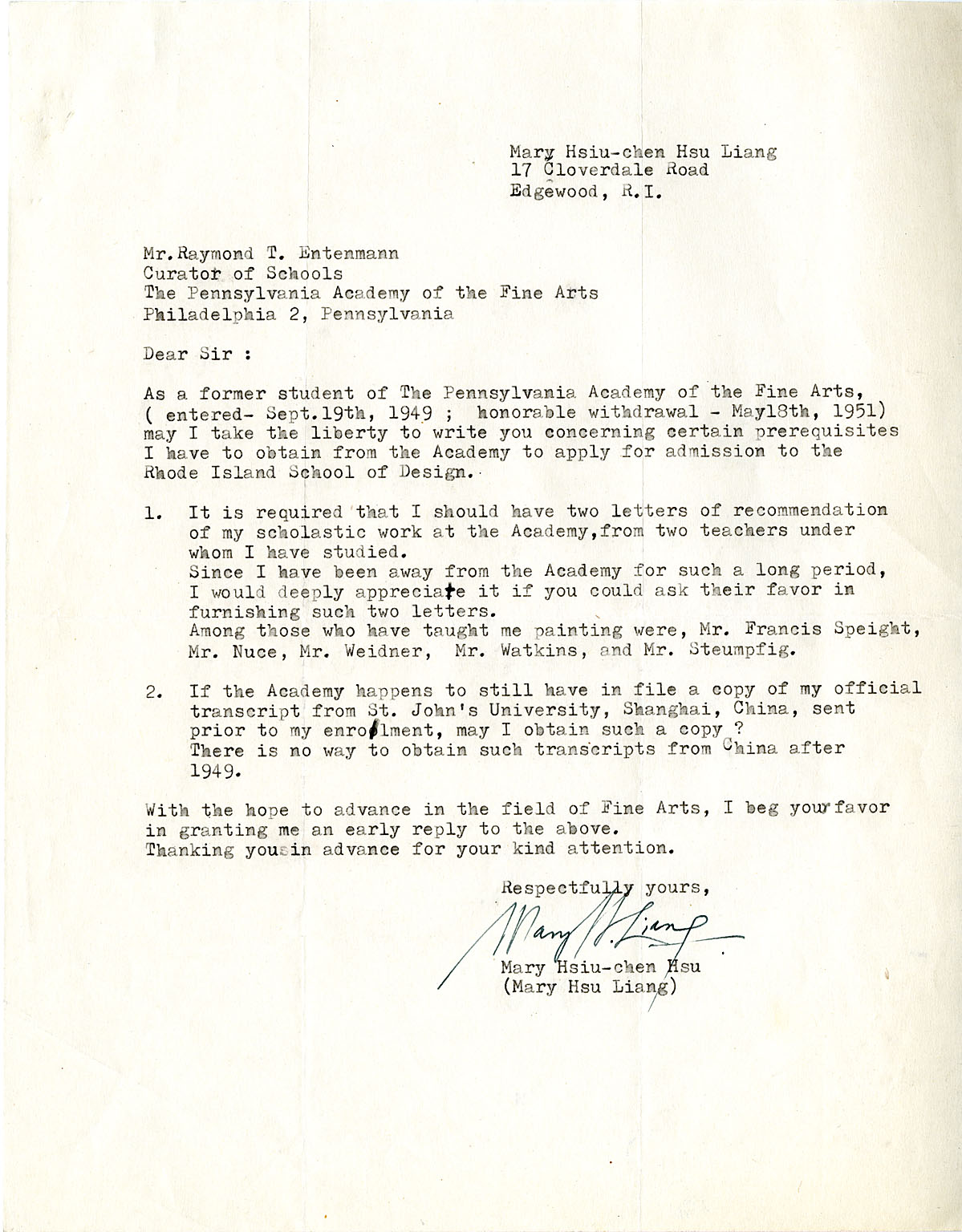
Mary would later go on to apply to the Rhode Island School of Design in 1960 and receive a letter of recommendation from Painting Instructor Franklin Watkins. He describes her as “a persistent worker [and] receptive student”. It is unknown whether or not she was accepted.